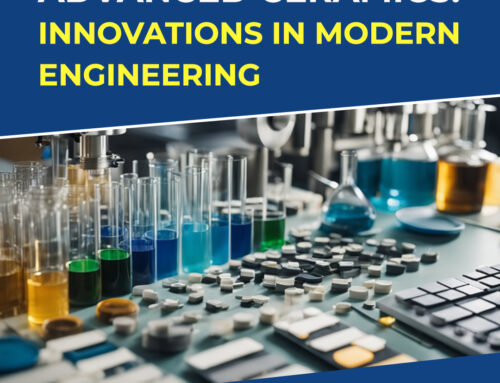In electronics, efficient thermal management is paramount. High thermal conductivity insulators are at the forefront, ensuring electronic devices work optimally by dissipating heat from sensitive components.
1. The Critical Role of Thermal Management in Electronic Devices
Electronic device design and manufacturing are heavily influenced by thermal management. Overheating can cause component failures, reduced performance, and even fire hazards. Ensuring heat is effectively managed is vital for the performance and longevity of devices, especially in high-powered applications like CPUs, GPUs, power electronics, and electric vehicles.
2. High Thermal Conductivity Insulators in CPU and GPU Heat Sinks
These insulators are essential in designing heat sinks for CPUs and GPUs. They absorb and transfer heat from these processors to maintain safe temperature limits. This maximizes heat dissipation, reducing the risk of overheating and ensuring CPUs and GPUs work optimally.
3. Power Electronics and High-Power Applications
Thermal management is becoming more important in power electronics and high-power applications. For instance, electric vehicles and renewable energy systems produce significant heat. High thermal conductivity insulators effectively dissipate this heat, preventing performance degradation and component failure.
Thermal Management in Electric Vehicles (EVs)
Electric vehicles (EVs) have gained significant traction globally due to their eco-friendly nature. As they continue to dominate roads, efficient thermal management becomes more crucial. EVs have complex battery systems. An overheated battery can significantly shorten its life span, affect its performance, and, in worst cases, lead to fires. Therefore, keeping the battery at a stable temperature is important. Besides batteries, EVs have electric motors and power electronics that also need effective thermal management solutions.

4. Thermal Management Innovations
Recent advances in thermal management have improved the efficiency and reliability of electronic devices. Engineers are devising new solutions like using high thermal conductivity insulators, combined with heat sinks and pipes, to greatly improve the thermal performance of devices.
There is an increase in demand for cloud computing and storage in data centers, which means they produce more heat. Effective cooling solutions are essential to prevent equipment failure.
The aerospace industry also relies heavily on thermal management. Spacecraft and satellites need insulation materials and cooling systems to combat extreme temperature fluctuations.
In consumer electronics, thermal management in smartphones is critical because their powerful processors generate significant heat. Among the solutions used are vapor chambers or graphite heat spreaders.
The Role of Vapor Chambers in Smartphones
Vapor chambers are a popular solution for smartphone manufacturers. As smartphones become more powerful, they generate more heat. A vapor chamber, essentially a sealed environment containing a liquid that turns into vapor upon heating, helps dissipate heat across the device, preventing hotspots. This ensures the phone maintains an even temperature, allowing users to enjoy uninterrupted use, even during intense tasks like gaming or streaming.
Furthermore, advancements in artificial intelligence and machine learning have given rise to powerful computing systems like deep learning accelerators or AI processors. These need robust thermal management to work well.
Deep Learning Accelerators and Their Thermal Challenges
Deep learning accelerators, special chips designed for AI computations, are becoming integral in modern technology. These chips extract vast amounts of data from data centers to smartphones. However, such fast computations generate significant heat. Addressing the thermal challenges of these accelerators is critical, as overheating can slow down processes, shorten chip life, and cause device failures. Engineers constantly seek new solutions, from improved chip design to advanced cooling techniques, to keep these accelerators running smoothly.
5. The Automotive Industry and Thermal Management
As more vehicles become electric, it’s increasingly important to manage the temperature in electric motors, batteries, and power electronics.
6. Techniques in Thermal Management
Active cooling systems such as liquid cooling or air cooling use mechanisms like fans to dissipate heat. On the other hand, phase-change materials absorb heat as they change state, helping regulate temperature passively.
Liquid Cooling: The Future of Thermal Management?
Although not new, liquid cooling is becoming popular in electronic devices, especially in high-performance computing environments. Unlike traditional air cooling methods that dissipate heat by circulating air, liquid cooling systems use a coolant to absorb and transport heat away from the components. The major advantage? Liquids, particularly specialized coolants, have higher heat capacity than air. This means they can absorb and carry away more heat, making liquid cooling systems more efficient. Moreover, they operate quietly and can be designed to fit snugly into compact devices. As devices become more powerful and space remains at a premium, more liquid cooling systems will likely be used.
Thermal interface materials like thermal pastes improve heat transfer efficiency. Heat sinks with fins increase the surface area for better heat dissipation, a method known as convection. Fans in devices provide active cooling, while liquid cooling systems offer a quieter, more efficient alternative.
In Summary
Effective heat management is indispensable for high-powered electronic applications. Devices stay efficient and reliable with high thermal conductivity insulators and advanced thermal management technologies. With the growing demand for faster processing speeds and higher power densities, innovations in thermal management will continue to be a key part of electronic design and manufacturing.







